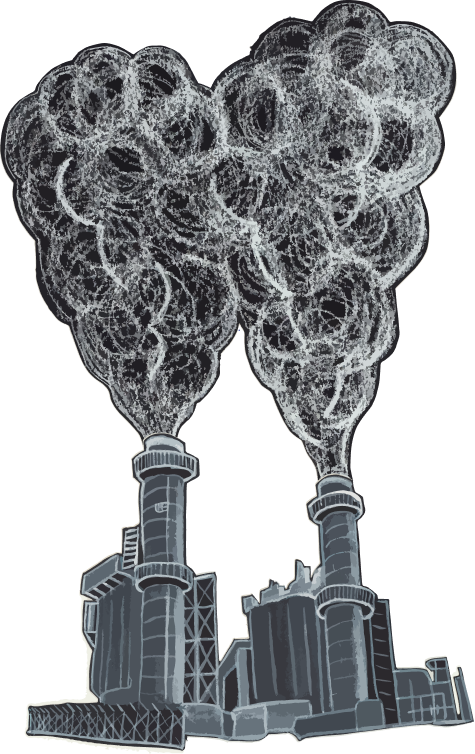Iowa
Back to mapTo get to zero by 2050, Iowa must cut climate pollution by
4.9 million metric tons of CO2 equivalent a year.
Emissions in Iowa
Million metric tons of carbon dioxide equivalent (MMTCO2e) emissions
Note: Grey area indicates missing data due to processing delays.
Source: WRI, Mar 2021
This is how we're going to do it.
Source: WRI, Mar 2021
- Boilers and furnaces with heat pumps
- Gas stoves with induction ranges
- No-till farming to keep CO2 in the soil
- Capturing methane leaks from landfills
- Capturing CO2 to make emissions-free concrete
- Burning green hydrogen to make emissions-free steel
- Plugging methane leaks from gas pipelines
Decarbonize Our Buildings
7% of Iowa's climate pollution comes from buildings.
We burn fossil fuels to heat our air, water, and food.
To cut this pollution...
Let's electrify our heat!
We'll replace...
...in all of Iowa's 2.1 million buildings.
In fact, 28% of buildings in Iowa are already fossil fuel free!
That means we only need to electrify the remaining 1.5 million dirty buildings in Iowa. That's around 54,000 per year.
Source: Microsoft, Mar 2021; NREL, Dec 2021Electrifying all buildings cuts 7% of the pollution.
Decarbonize Our Transport
15% of Iowa's pollution comes from cars, trucks, trains, and planes.
But mostly from cars.
To cut this pollution,
your next car must be electric.
Or consider going car-free with public transit, bikes/e-bikes, car share, or other alternatives!
There are 1.2 million vehicles in Iowa and 2,000 are already electric (0.2% of the total).
We need to electrify (or replace) the remaining 1.2 million gas-powered vehicles. That's around 42,000 a year.
Source: DOT, Feb 2021Electrifying all transportation cuts 15% of the pollution.
Decarbonize Our Power
21% of Iowa's pollution comes from burning coal, gas, and oil to make power.

To cut this pollution...
Put solar panels on your roof!
Then, we'll replace all fossil fuel power plants with solar and wind farms.

...and find good jobs for those workers.
Current Fossil Fuel Power Plants in Iowa
15 coal plants
Walter Scott Jr. Energy Center
Pottawattamie County
1,779 MW
George Neal North
Woodbury County
1,080 MW
Louisa
Louisa County
812 MW
Ottumwa
Wapello County
726 MW
30 gas plants
Marshalltown Generating Station
Marshall County
709 MW
Emery Station
Cerro Gordo County
603 MW
Greater Des Moines Energy Center
Polk County
576 MW
Electrifarm
Black Hawk County
264 MW
84 oil plants
Lime Creek
Cerro Gordo County
90 MW
Roquette America
Lee County
84 MW
Dayton Avenue Substation
Story County
79 MW
Indianola
Warren County
55 MW
But wait!
It's not enough to replace our power plants with wind and solar farms.
To power our electric cars and buildings, we need two times the electricity we have today.
In all, we'll need to build 4,000 Megawatts of wind power and 4,000 Megawatts of solar power.
Since Iowa already has 4,000 Megawatts of wind and 54 Megawatts of solar, that's 4,000 Megawatts of wind power we need to build and 4,000 Megawatts of solar power. That's around 0 Megawatts of wind power and 137 Megawatts of solar power a year.
Source: EIA, Apr 2022Decarbonizing all dirty power cuts 21% of the pollution.
And gives us zero-emissions power we need to eliminate pollution from buildings and cars!
Other Emissions
The last 56% of Iowa's climate pollution comes from other sources...
This includes farming, landfills, industry, and leaks from gas pipelines.
There's no one solution to solve these problems, but there are lots of great ideas:
Ready to do your part?
Learn how to electrify your own machines and pass local policy to electrify the rest
Take Action